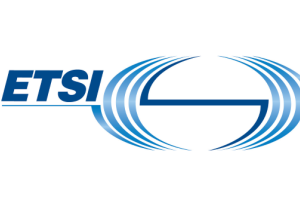ETSI debuts security framework for IoT devices amid cybersecurity concerns

ETSI has released a document outlining high-level security provisions for consumer IoT devices, in response to the growing concern over cybersecurity and data protection on the Internet of Things (IoT) landscape. As more household devices connect to the internet, safeguarding personal data has become a paramount issue for manufacturers and consumers alike.
Titled “Cyber Security for Consumer Internet of Things: Baseline Requirements,’ the newly introduced guidelines are designed to support stakeholders involved in the development and manufacturing of IoT devices, providing a flexible framework to innovate while ensuring a baseline level of security. The document emphasises outcome-focused provisions, steering clear of overly prescriptive measures, allowing organisations the freedom to tailor security solutions for specific products.
Consumers expect that they will be able to protect their data by configuring IoT devices and associated service functionality appropriately. Hence, it is expected that manufacturers provide features within consumer IoT devices that support the protection of such personal data. In addition, there exist laws and regulations that relate to the protection of personal data in consumer IoT devices.
The present ETSI document intends to help manufacturers of consumer IoT devices provide a number of features for the protection of personal data from a strictly technical perspective.
“Consumers are increasingly dependent on connected devices for secure transactions, making it crucial for manufacturers to earn that trust – prioritising security by design”, said Jan Ellsberger, director general at ETSI. “These guidelines aim to address the most significant vulnerabilities and I am confident that they help create a safer IoT ecosystem, so long as we remain vigilant – knowing full well that this work is never ‘done’.”
Key features of the document include:
- Baseline Provisions: Establishing fundamental security requirements applicable to all consumer IoT devices.
- Guidance for Implementation: Providing organisations with clear examples and explanatory text on how to apply the provisions.
- Compliance with GDPR: Ensuring that IoT devices processing personal data align with General Data Protection Regulation standards.
- Futureproofing: Anticipating that future revisions will transition current recommendations into mandatory provisions.
The document encompasses a host of consumer IoT devices, including smart home assistants, connected appliances, health trackers, and more. It also considers the unique resource constraints that these devices may face, such as limited processing power and energy supply.
ETSI emphasises that while these guidelines will significantly enhance security measures for consumer IoT devices, they are not a panacea for all cybersecurity challenges. As the landscape of consumer IoT continues to evolve, ETSI remains committed to collaborating with industry partners to refine these guidelines and ensure a safer, more secure experience for users.
The present document sets a security and data protection baseline; however, due to the broad landscape of consumer IoT, it is recognised that the applicability of provisions is dependent on each device. The present document provides a degree of flexibility through the use of non-mandatory ‘should’ provisions (recommendations).
The ETSI document also defines the security requirements for the device, it does not define a testing or certification method to assess the requirements against. Some methods of fulfilling the requirements in the present document can impact testing and certification making it very difficult, or even impossible, to demonstrate compliance in certain test regimes.
Testing and certification involving third-party assessment are likely to require documentation, including architectural design documentation, security requirements capture and analysis, threat models and environmental assumptions, policy documentation for lifecycle management (including supply chain management), assessment certificates for any components that are used to implement the functionality required in the present document. These documentation requirements will be defined by the testing regime and are out of the scope of the present document.
Comment on this article below or via X: @IoTGN and visit our website IoT Global Network
